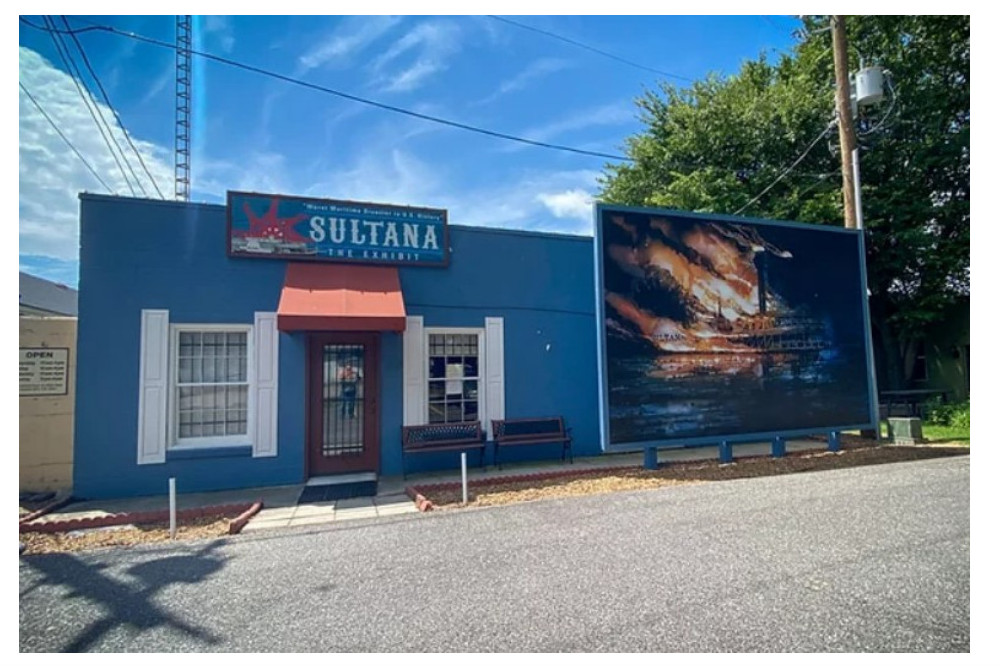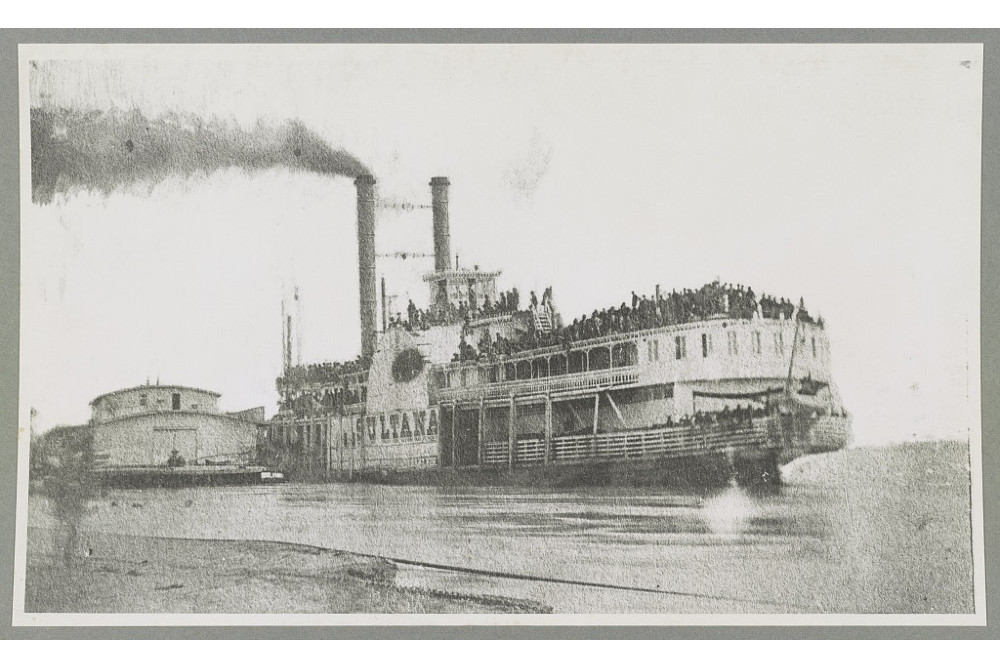Sultana Disaster Museum
The Sultana Disaster Museum tells the story of the explosion and sinking of the Sultana, a commercial paddlewheel steamer built in 1863. It was overloaded (see photo), and more than 1,200 people perished when it exploded on the Mississippi River near Memphis, Tennessee, drifted, and sank near Marion, Arkansas.
At the end of the U.S. Civil War, the U.S. government contracted (commandeered) the Sultana to take union soldiers back north, along the Mississippi River. Many of the soldiers had survived not only the war but also the harsh conditions of POW camps in the south. The captain happily accepted a transport fee of $5 per enlisted soldier and $10 per officer. In Vicksburg, Mississippi, while a faulty boiler was quickly patched (on the captain's order) instead of repaired, he took on 1,965 soldiers and 35 officers who came from the northern states of Ohio, Indiana, Michigan, Tennessee, Kentucky, and West Virginia. There were also 12 women on board. The Sultana’s legal passenger limit was 376, plus crew. Near Memphis, Tennessee, the Sultana took on coal and offloaded sugar.
At 02:00 am on 27 April 1865, the patched boiler exploded, followed by explosions of the other two boilers. The resulting fire quickly overtook the steamboat. Some passengers were killed by shrapnel, steam, or fire. Others jumped overboard into the cold, fast-running river, which was over 3 miles wide at that point. Over 1,200 perished that night.
The ship sank next to Marion, Arkansas. People from Marion – a confederate town – and from across the river acted quickly to save whomever they could.
This disaster received little attention, in part because it occurred 2 weeks after President Lincoln was assassinated and the day after his assassin was captured and killed.
The Sultana Disaster Museum is currently in a temporary location while funds are raised for a larger, permanent setting. With pictures, personal items, pieces of the Sultana, and a 14-foot replica of the steamboat, the museum tells the story of the steamboat itself, the passengers, the rescuers, and the corruption that led to the overcrowding on the boat.
Note that scattered in both southern and northern states there are small memorials for the victims of the Sultana disaster.
For current visiting hours, please visit the website of the museum.
Do you have more information about this location? Inform us!
Source
- Text: Anne Palmer (TOW) & Deidre Cody (relative of survivor)
- Photos: Sultana Disaster Museum (1), Thomas W. Bankes (2)
- Sultana Disaster Museum
- "The Sultana: Titanic of the Mississippi" in Hoosier State Chronicles
- Chester Berry, Loss of the Sultana and Reminiscences of Survivors,1892
- Gene Eric Salecker. Disaster on the Mississippi: The Sultana Explosion, April 27, 1865. Published by U.S. Naval Institute Press, 1996.







